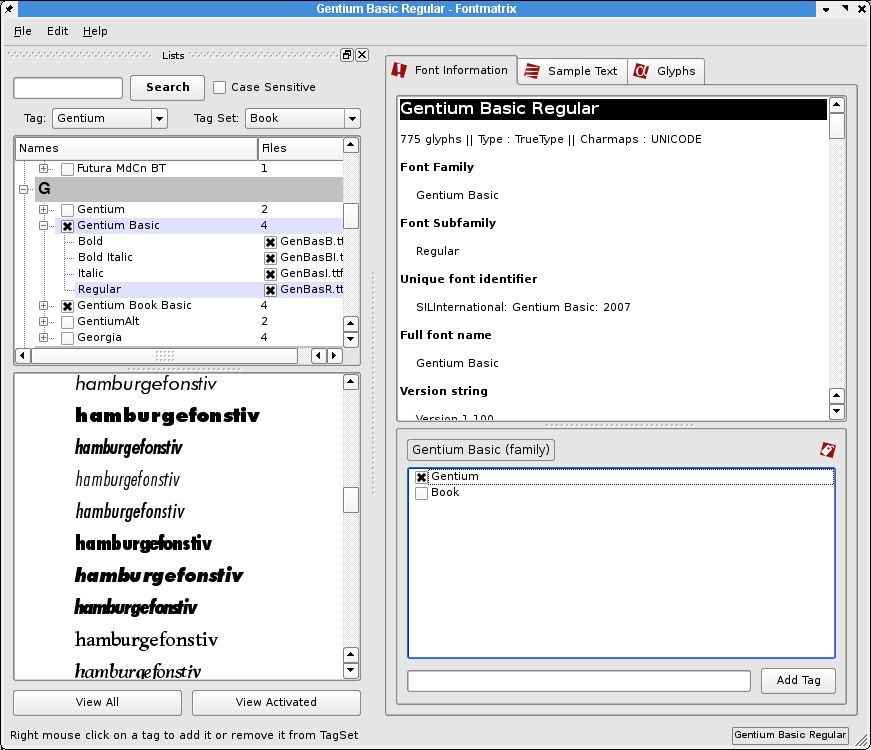

#Scribus fonts preview zip#
A better choice might be the lossless or ZIP for greater image fidelity.

#Scribus fonts preview pdf#
In addition, there is the setting for Compress Text and Vector Graphics which may help to limit the size of the PDF from these elements.Īt the bottom of the General tab is a section for choosing the Image Compression Method and its settings, again with the idea to have sufficient resolution, yet if possible reduce the size of the final file, since image data is embedded in the PDF.Īs far as Compression Method specifically, a lossy type such as JPEG allows for more reduction in file size, but runs the risk of data loss and degradation of the image in the PDF. Any EPS images contained in your document may contain vectorized elements, so this setting may be important for your output. This is why the resolution for EPS graphics defaults to this setting. For most purposes, a minimum resolution should be 300 dpi. Here at the export stage, you must again consider the resolution of images in your document. In many cases this overrides any other choices, since you cannot use a format your printer will not or cannot accept. PDF/X-3 is based on 1.3, but includes the need for color management to be activated.Īn important and very basic consideration when deciding on a PDF version is what is recommended by your printer. Transparency was introduced as of version 1.4, and multilayered documents with version 1.5, so your document may dictate one of these as a choice. If you document does not include any transparency, you might choose version 1.3, since it did not allow transparency. With each version name you will see a corresponding version of Acrobat, in which the PDF version was introduced. Scribus allows for selection of various types according to the needs you have based on the content of your document.

There are now many flavors of PDFs, as the format has evolved to include various features related to its content and structure. The following, then, will cover a number of these settings for your consideration. While the default setting may be the correct ones for many situations, we may well which to change a few for the desired results. The first tab shows a number of options, which are at the core of the settings needed for the file we present to the printer. Selecting File > Export > Save as PDF opens a dialog with multiple tabs and options, perhaps a bit bewildering to the new user, yet does offer some default settings which are useful for many printing tasks. SVG is a new format, vector type, and highly flexible, but in part because of its newness has not become universally accepted or usable.This is a bitmap, not vector format, and thus high resolution files may be quite large. A potential image format might also be useful is to save as a TIFF, which will flatten transparencies.EPS suffers a bit from having customized versions on some systems. EPS, or Encapsulated PostScript, rather than defining the placement of items in a document, places them in a container for some greater flexibility.Although not as flexible as PDF, it is still used by Scribus as an output format for directly printing from Scribus. PostScript actually predates PDF, and was the original widely used format for desktop publishing, aided by the fact that many printers were designed to accept PS input to create documents.There are other formats available through File > Export:
#Scribus fonts preview iso#
PDF is an ISO standard by virtue of its carefully directed structure, and its files have a compact size, considering the richness of the content, the vectorized flexibility, and its universal acceptance across many different systems. In most cases, PDF has emerged as the most widely accepted format for all those working in the graphic chain. Now we come to the final stage before the creation of a printed document, which involves incorporating all of our sources (text, fonts, and images) into the final fixed layout, and in addition, application of the appropriate color profiles for the intended results.


 0 kommentar(er)
0 kommentar(er)
